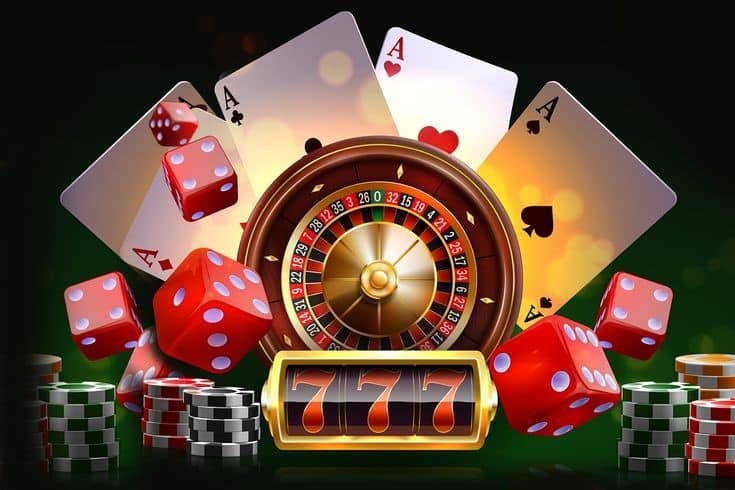
Casino games have consistently attracted a diverse audience, delivering not only the excitement of risk but also a tailored experience tailored to various kinds of players. Ranging from analytical thinkers who thrive on strategic thinking to more casual gamers seeking entertainment, casinos recognize the details of their audience and create games that meet these diverse preferences.
In exploring the universe of casino gaming, we discover a rich tapestry of options that interest all types of players. High-stakes poker tables attract competitive individuals, while colorful slot machines appeal to those seeking quick rewards. Whether it’s about the allure of winning big or simply relishing the community feeling, casinos design their game offerings to ensure that all players find a place where they feel welcome and involved. Understanding how these games cater to diverse types of players can enhance not only our appreciation of them but also how we approach selecting which games to play.
Comprehending Gamer Groups
In the varied world of gambling entertainment, participants can be grouped into specific types based on their incentives and choices. These player categories range from the casual and community-oriented gamers, who enjoy the entertainment value and community interactions that gambling provides, to the more analytical and calculated players, who seek to boost their odds and winnings. Grasping these different kinds is essential for casinos to customize their offerings and create engaging environments.
One popular category is the group-oriented player, who considers casino games as a form of community interaction and fun rather than a high-stakes gambling endeavor. These gamers often enjoy games that encourage engagement and friendship, such as poker. Their attention is on the journey rather than the outcome, so lively environments and shared moments are what they cherish the most.
On the opposite end of the range, strategic players are inspired by contest and the pursuit of skill. They tend to be drawn toward games that necessitate decision-making and strategy, such as strategic card games, where their abilities can influence the outcome. This category often interacts with the games on a more intense level, utilizing knowledge and strategies to secure an edge. Understanding these drives allows casinos to design atmospheres and game selections that suit to each participant’s unique choices.
Strategies for Game Design
Casino games are designed with diverse player types in mind, employing multiple strategies to attract and engage them. For casual players, the focus is on ease and ease of understanding. Games like slots are often aesthetically pleasing with simple mechanics. This allows players to enjoy the experience without a difficult learning curve, fostering an inviting atmosphere. The bright colors, engaging audio, and themes create a fun environment where players can easily get immersed and entertained.
For strategic players who enjoy a deeper level of engagement, games such as Texas Hold’em and blackjack offer depth and strategic elements. These games feature strategy and tactical choices, appealing to players who thrive on competition and want to exercise their mental skills. The design of these games often includes complex rules and mechanics that test players to hone their skills and develop strategies over time, resulting in a rewarding experience for those who enjoy mastering the game. https://jun88casino.top/
Additionally, community-oriented players are considered through games that emphasize interaction and community. This comprises live dealer games and multiplayer formats, which foster a sense of community among players. The design of these games often includes chat features and communal aspects, allowing players to connect and share experiences. By creating an environment where interaction is promoted, casinos can effectively involve community players, making the gaming experience more enjoyable and memorable.
Boosting Player Satisfaction
Betting options have advanced considerably to provide a significantly immersive environment for participants. Application creators focus on stunning visuals, dynamic soundscapes, and novel game mechanics that engage participants into the casino atmosphere. By utilizing technology, such as VR and augmented reality, casinos ensure that participants feel as if they are part of a exciting atmosphere, enhancing not just the enjoyment of the activities but also the entire enjoyment of being in a gambling venue.
Social interaction is another critical aspect in boosting player satisfaction in betting options. Many games are developed to encourage engagement among gamers, whether through multiplayer modes or messaging options. This interactive component appeals to players who like communicating with other participants while competing, promoting a feeling of community. Moreover, interactive elements can consist of ranking systems, tournaments, and rewards for collaborative gaming, which capture determined players and encourage them to return for further.
Finally, customization plays a pivotal role in tailoring the interaction for diverse player types. Casinos and game developers study participant habits and likes to present tailored game suggestions and benefits. By grasping the distinct preferences of players, gaming establishments can present tailored offers, rewards, and new game releases that resonate with each individual, thus boosting their total enjoyment and loyalty to the casino.